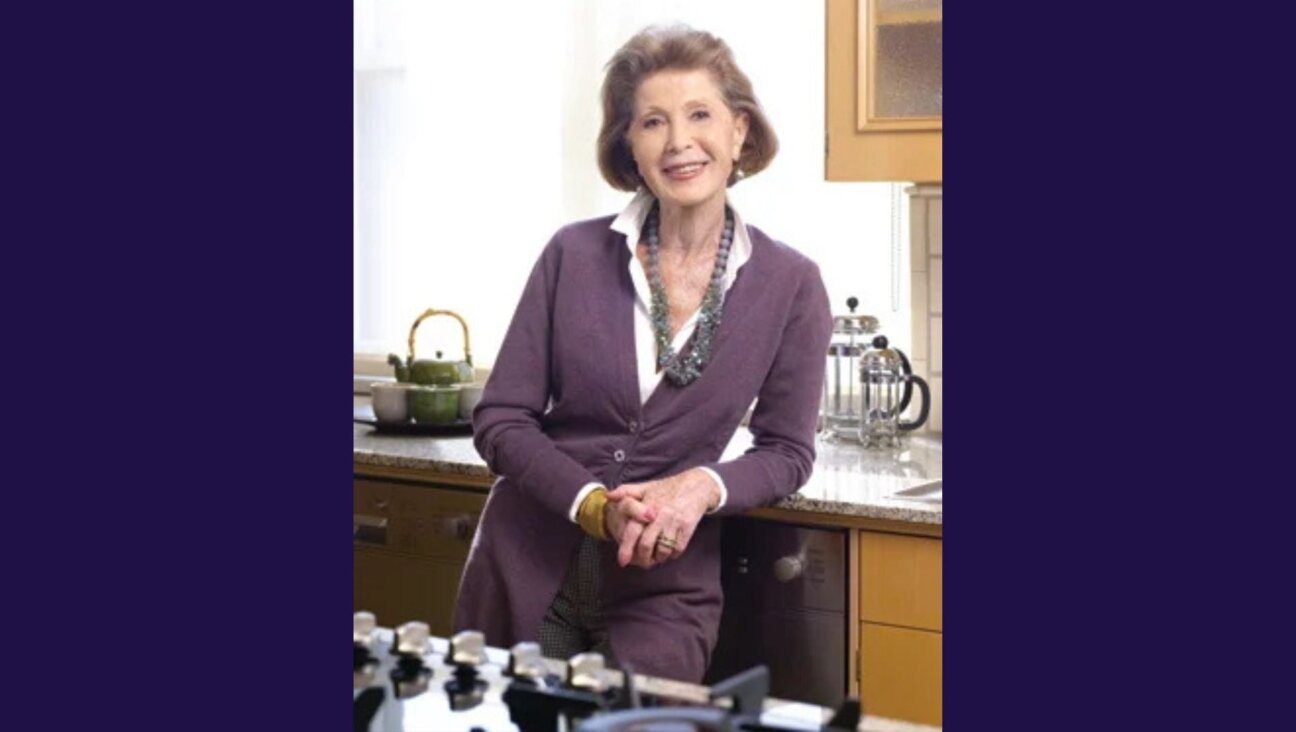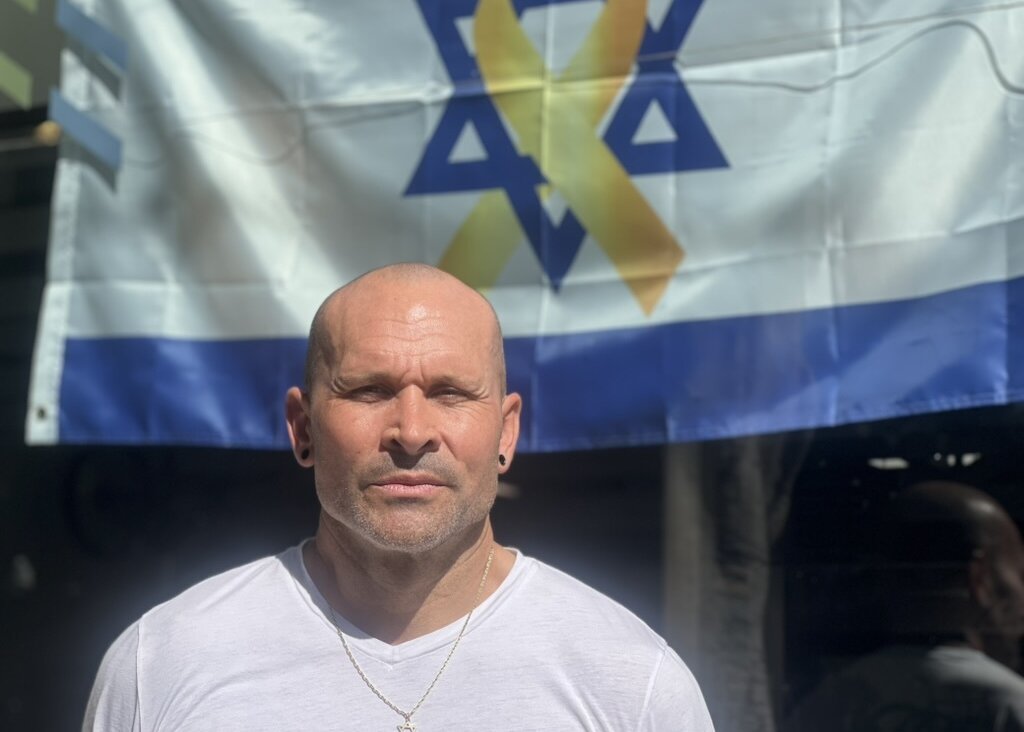Denmark Forced by History To Revisit Heroic Tale of Jewish Rescue From Nazis

Heroic Escape: A Jewish family lands in Sweden after escaping from Denmark as Nazis prepared crackdown in 1943. Image by courtesy of museum of danish resistance
Few nations have been so lauded for their stance during the Holocaust as tiny Denmark.
As October approaches, marking the 70th anniversary of the rescue of Danish Jewry, numerous events in Denmark and overseas commemorate the mass effort in which hundreds, possibly thousands, of Danes helped smuggle almost the entire Danish-Jewish community to coastal towns and villages and then across the Øresund strait to Sweden.
Because of their effort almost all of Denmark’s approximately 8,000 Jews survived Nazi Germany’s occupation of their country.
But something has happened in recent years to Denmark’s rosy view of itself. During the past decade, Danes have learned about harsher, previously little known aspects of the Jewish rescue as the last generation of survivors have revealed their wartime experiences, many for the first time.
No one disputes the key historical truth: Thanks to the Danes’ mass rescue of most of the Jews as well as to the Danish government’s effort to monitor the almost 500 Danish Jews sent to the Theresienstadt concentration camp, only about 100 Danish Jews — about 1% of the country’s Jewish population — perished during World War II.
But the Danish Jews’ recently emerging tales of trauma, loss and despair have made for a more nuanced picture. Their stories have added to criticisms raised by historians, journalists and others about what has been largely, up to now, a simple, feel-good morality tale.
Some survivors believe that for the first time, the more difficult stories of the 5% of Danish Jews who were left behind in Denmark or sent to Theresienstadt have appeared from beneath the shadow of the rescue of the 95%.
“Maybe the story about the Danish people supporting the Jews to escape is a bigger story than the people who were deported to Theresienstadt,” said Steen Metz, whose father, Axel Mogens Metz, died in the camp. “But my feeling is that it has been underpublicized to a great extent.”
One of the most surprising of the newly emergent aspects of the Nazi occupation is the tale of the Jewish children who were left behind with Christian families in Denmark during the war’s last years.
Until a few years ago, the story of the hidden children was largely unknown in Denmark. The few people who did know about it thought that, at most, perhaps 50 Jewish children were left behind by their parents.
The number is now known to have been much larger. In 2009, Sofie Lene Bak, a Danish historian, spoke about the children to a Danish newspaper and appealed for hidden children to come forward. As a result, just from that one article, she discovered an additional 100 boys and girls who were taken in by foster families. Given the number of those who must have died before the article appeared, or who never saw it, there may have been many more.
The children were left behind for various reasons. Some families realized it would be impossible to lie in the darkness overnight waiting for a boat with a young child. Others were forced to leave their sons and daughters because Danish fishermen feared children and infants might make noise and attract Nazi attention during the crossing to Sweden. Some of the children who did make the passage were sedated.

Jewish parents also left their children behind because they thought that the war, which by 1943 had turned in the Allies’ favor, would be over soon and that life in occupied Denmark would be better than a life of exile in Sweden.
Denmark’s chief rabbi, Bent Lexner, said he has officiated at funerals in the past few years where people confided that they never felt able to ask their parents why they had been left behind. “It was taboo for them,” Lexner said. “They never talked about it but they also felt they would have liked to ask their parents what happened. How could you do it?”
Most children returned to their parents after the war. But it wasn’t easy. The youngest children did not recognize their mothers and fathers after almost two years apart. Others had developed strong bonds with their foster family and chafed at returning to biological parents.
Tove Udsholt was five when, in 1945, her mother arrived in Gilleleje, a small town on the north coast of Zealand, to take her back to their home in Copenhagen. Udsholt did not recognize her mother. And she certainly did not want to leave her new parents in Gilleleje to live with her biological mother, who was now in the process of divorcing her father.
Udsholt’s mother tried several times during the years that followed to force her daughter to live with her in Copenhagen. But she finally had to accept that her daughter preferred life with her foster parents. “She had lost me,” Udsholt said. “I knew I had a mother in Copenhagen, but she was not the mother I loved.”
Udsholt finished school in Gilleleje. At the age of 20, she was christened and, soon after, she married a Danish Christian. Although Udsholt raised three sons in the Danish Lutheran church, her youngest son became interested in his Jewish roots. He married a Jewish woman and converted to Judaism. “I have three Christian grandchildren and three Jewish grandchildren,” Udsholt said. “It is [really interesting] for me to come in the synagogue with my Jewish family now.”
Stories such as Udsholt’s were largely unknown until Bak began a research project about the wartime experience of Danish Jews in 2008 for the Danish Jewish Museum in Copenhagen.
“Until this book was researched I’m not aware of this having been an issue which people paid attention to,” said Herbert Pundik, a Danish Jewish journalist who published a book about the Danish rescue, “In Denmark It Could Not Happen,” 15 years ago. ”I think she really opened up a new chapter.”
As is common with many historic events, the story of the Danish rescue has been revised over the decades.
Historians have drawn attention to Denmark’s harsh immigration policy during the 1930s which, like those of most other European nations, prevented Jewish refugees from escaping the Nazis. They have also highlighted Denmark’s expulsion of almost two dozen Jewish refugees between 1940 and 1943 back to almost certain death in Nazi Germany. Danish Prime Minister Anders Fogh Rasmussen apologized for the expulsion in 2005.
Historians have also argued over Denmark’s weak resistance to the Nazis before, during and after the Nazi invasion. And they have highlighted the exorbitant prices a small but significant number of Danish fishermen charged for passage to Sweden.
A skilled Danish worker in 1943 earned a little over 400 kroner per month. The average price of a crossing was 1,000 Danish krone per person, according to Bak, who says that some fisherman charged up to 50,000 krone.
Bak’s research revealed many tales that had never previously been discussed. “Every one of the hidden children thought that they were the only child that was left behind,” Bak said. “They never told their stories and nobody asked.”
Many parents did not talk about leaving their children behind because of the guilt and distress they still suffered. Similarly, many Danish Jews who escaped to Sweden felt unable to talk about the hardships they faced when they returned to Denmark after the war.
Denmark tried its best to support its Jewish citizens when they returned from exile. Danish refugees qualified for state assistance and, in some cases, friends, neighbors and even Copenhagen authorities safeguarded possessions while their owners were gone. But there were instances too of unscrupulous Danes raiding the apartments of Danish Jews while they were gone.
Bak believes that many of the more nuanced stories — about Danish Jews returning to find their apartments occupied or their possessions missing — have only come out recently because aging survivors realized that if they didn’t tell their stories now, they would be lost forever. She said that the interviews she collected of “Post Traumatic Stress Disorder, emotional loss, anti-Semitism, hidden children, destroyed and robbed homes and property are genuinely new.”
Bak’s book about the Danish rescue “Ikke noget at tale om,” which was published in Danish and in English, has been translated as “Nothing to Speak Of” but it might be better translated as “It’s not worth mentioning.” It is a phrase that Bak heard often from Danish survivors. And it neatly encapsulates how the Danes who returned from Sweden and from Theresienstadt with physical and psychological scars chose not to talk of their experiences.
Danish Jews wanted to rebuild their lives, raise their children and move on. They were acutely aware that, compared to other European Jews, they were fortunate. “They had to be grateful,” said Kirsten Nilsson, a reporter for the Danish newspaper, Politiken, who has interviewed many survivors. “Six million Jews were killed and they were survivors.”
Nilsson said that even non-Jewish Danes felt that their Jewish countrymen who escaped to Sweden had a better time during the war than the Danes who remained in occupied Denmark. “Who were [the Jews] to say, actually, it wasn’t so rosy,” Nilsson said.
Indeed, for many Danish Jews, Sweden was a paradise. Some Swedes adopted Jewish families and helped look after them throughout the exile. Janne Laursen, director of the Danish Jewish Museum in Copenhagen, said that the Danish-Jewish politician, Erling Olsen, who died in 2011, called his Swedish exile as a teenager “the best time of his life.”
But others returned from exile with emotional baggage that stayed with them the rest of their lives. Rasmus Bjerre, a freelance radio producer based in Copenhagen, recently interviewed eight survivors for an hour-long documentary that will be broadcast in Denmark on September 30.
One woman’s father drowned after the boat they were in capsized. The woman, who was 17 at the time, swam more than a mile back to shore to get help, but it was too late for her father, who was unable to swim having injured his leg jumping from a window to escape the Nazis. Bjerre said that the girl’s mother, who had been arrested and taken to Theresienstadt before she even made it to the boat, always blamed her daughter for her husband’s death.
Bjerre said that the daughter had “never spoken before because she still feels guilty.” Bjerre said that another survivor, whose father also drowned during the rescue, did not really start to think about his father’s death and why he had put it out of his mind, until he reached the age of 85.
All of the survivors told Bjerre that they remembered their escape as though it happened yesterday. “Because they haven’t talked about it, it’s intact in their memory,” Bjerre said.
While many of the Jews who returned from Sweden with psychological traumas were largely silent about what happened to them, the Danish survivors of Theresienstadt did talk and write about their experiences, says Silvia Goldbaum Tarabini Fracapane, who is working on a PhD dissertation about the Danish Jews in Theresienstadt, at the Technical University of Berlin’s Center for Anti-Semitism Research.
Tarabini Fracapane said that many Danes did not want to know about the camp. “It was most convenient for the surrounding society not to listen, people wanted to move on and forget about the war,” she said.
Theresienstadt gained infamy as a model camp because of a Nazi propaganda film that was made there and a 1944 visit made by the Red Cross.
Tarabini Fracapane said: “It was not a death camp, but people were still surrounded by death, vermin, horrible living conditions, hard labor, sickness and hunger.”
The popular image of Theresienstadt as a model camp has made many survivors feel as though the horrors they faced there have not been acknowledged. Metz, who now lives in Chicago, said that in a 2003 book, “I Hitler-Tysklands Skygge (In the Shadow of Hitler’s Germany),” Danish historian Hans Sode-Madsen wrote that none of the Jews who died in Theresienstadt died of starvation.
Metz, whose 40-year-old father lost half his body weight and died of a combination of malnutrition and being worked to death at Thersienstadt, said, “Even an email exchange, supported by facts by me, with the historian did not convince him.”
Metz added: “It was a model camp for one day only.” He said that of the 145,000 people sent to Thersienstadt, 32,000 died and an additional 80,000 were sent onward to extermination camps. Metz and his mother were among the survivors.
“If you call that not a bad [camp], then people don’t know what they are talking about,” Metz said.
Metz’s father died six months after arriving at Theresienstadt, in March 1944. One month later, the Nazis began allowing the Danish Red Cross to send food parcels to Danish prisoners. Those parcels gave Danish prisoners something to barter with and minimized the number of Danes who died in Theresienstadt.
Copenhagen’s social services agency was heavily involved in helping Danish Jews in Theresienstadt. The Nazis allowed the Danish authorities to send clothes to the prisoners. Even the famous visit of the Red Cross to Theresienstadt was arranged by Danish authorities who insisted on inspecting conditions there. A delegation of Danish civil servants joined the Red Cross delegation.
Danish officials are also believed to have influenced Werner Best, the top Nazi official in Denmark, to forge an agreement with Adolf Eichmann that Danish prisoners at Theresienstadt were not to be transported on to death camps.
Statistics of Denmark’s pre-war Jewish population and the number of survivors vary slightly depending upon sources.
Roughly 7,200 Danish Jews escaped to Sweden, according to Yad Vashem. Of the approximately 470 Jews sent to Theresienstadt, Tarabini Fracapane says 412 returned, plus three Jewish children born in the camp.
Bak said that she believes a total of 103 Danish Jews died during the war. It’s a stunningly low number compared with the genocide that occurred all around. But the redemption renders the Holocaust no less traumatic to those who survived.
Contact Paul Berger at [email protected] or on Twitter @pdberger
















